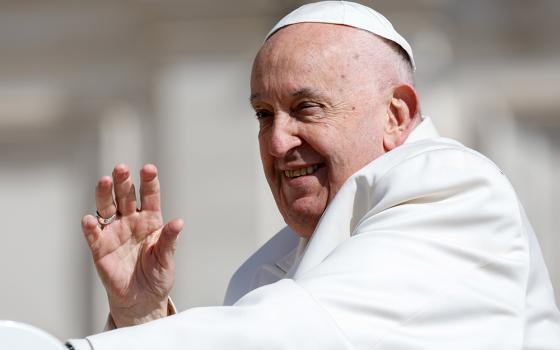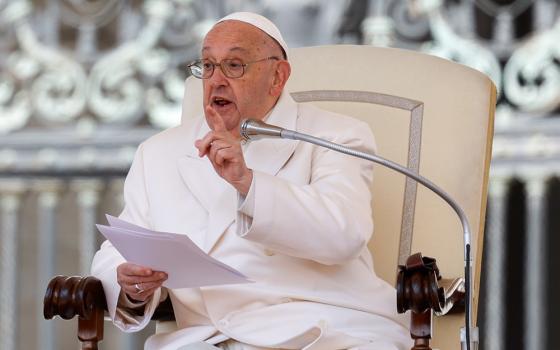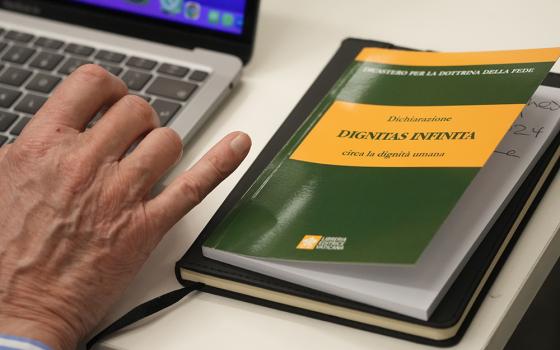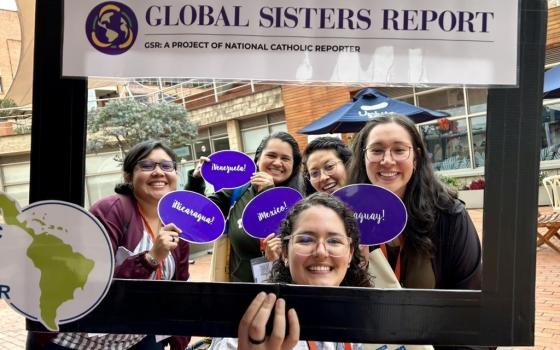
County Donegal, Ireland (Unsplash/Phil Aicken)
The American classic "I'll Fly Away," by Albert E. Brumley, exemplifies the idea that our ideal trajectory in Christian life is away from the world, toward God. Called "the most recorded Gospel song of all time," it has been covered or sampled by such artists as Puff Daddy, Alan Jackson, Kanye West and Bob Marley.
Throughout the song, the singer not only laments mortality, but also a corrupt and failing world, enduring "weary days" until at last flying "like a bird from prison bars." Salvation in this hymn is escape.
Some glad morning when this life is over
I'll fly away
To a home on God's celestial shore
I'll fly away
On the contrary, in St. Patrick's prayer-song "The Deer's Cry," the singer moves not away from the world but into it. It starts by connecting to the land and binding the singer to the powers of creation. The song then invokes protection from evil agents — "every cruel and merciless power" — that disorder the world. Finally, the hymn culminates in Christ.
Rather than taking the singer away, Christ incarnates within the singer and from them into the world, not at some future time, but now. Salvation is an embodied reality in the present.
Christ with me, Christ before me,
Christ behind me, Christ within me,
Christ beneath me, Christ above me,
Christ at my right, Christ at my left
The difference between the two hymns — escaping creation vs. becoming more fully part of it — stems from "The Deer's Cry" carrying within it an older Indigenous way of being in the world and an authentic reflection of our Christian call.
Advertisement
I'm not the first to notice the remarkable similarity between "The Deer's Cry" and another song, one sung on the final morning of the Navajo Night Chant:
With beauty before me, I walk.
With beauty behind me, I walk
With beauty below me, I walk.
With beauty above me, I walk.
With beauty all around me, I walk.
The Navajo Night Chant and much of the Navajo ceremonial tradition reconnect the people with the Holy People and the sacred land they inhabit. This is done in two broad movements.
First, the ceremony reinforces the deep, relational connection between the person that the ceremony is conducted for and various key parts of the natural world. In this example from the Blessingway, the song reminds the patient of her grandmother/grandchild relationship with the Earth. This is illustrated by a song explained by Navajo singer Frank Mitchell in his autobiography, Navajo Blessingway Singer:
Now Earth, it's indwelling one,
Her grandchild, you are, really
Her grandchild, you are, really
Her grandchild, you are, you are
Second, this connection purifies disorder and restores harmony or beauty.
Hózhó is the Navajo term translated as beauty. Its full meaning requires more unpacking than I can do here, but Gary Witherspoon describes it in Language and Art in the Navajo Universe as expressing "such concepts as beauty, perfection, harmony, goodness, normality, success, well-being, blessedness, order and ideal."
Where moderns tend to feel that religious ideas take us out of this world into an ideal one, the Navajo concept of hózhó is centered within and enmeshed with this world, a harmonizing of you with all that you connect with. The world is harmonious and ideal movement is toward it.
Hózhó nahasdlíí, the phrase repeated four times at the end of Navajo prayers, exemplifies the movement of Navajo ceremony and prayer from the cosmos to personal transformation. Often translated as "everything returns to beauty," Michelle Kahn-John (Diné) and Mary Koithan translate it with fuller depth: "happiness, health, harmony, peace, wellbeing, beauty, and all that is good — restored."
The human person returns to beauty through connection, something Willie Jennings highlights in The Christian Imagination: Theology and the Origins of Race with a Navajo song:
The mountains, I become part of it ...
The herbs, the fir tree, I become part of it.
The morning mists, the clouds, the gathering waters.
I become part of it.
Spiritual movement in Navajo prayer is not an escape from a place of disorder but a return to harmony enacted now. "The Deer's Cry" matches this movement, especially in the context of the life of St. Patrick.
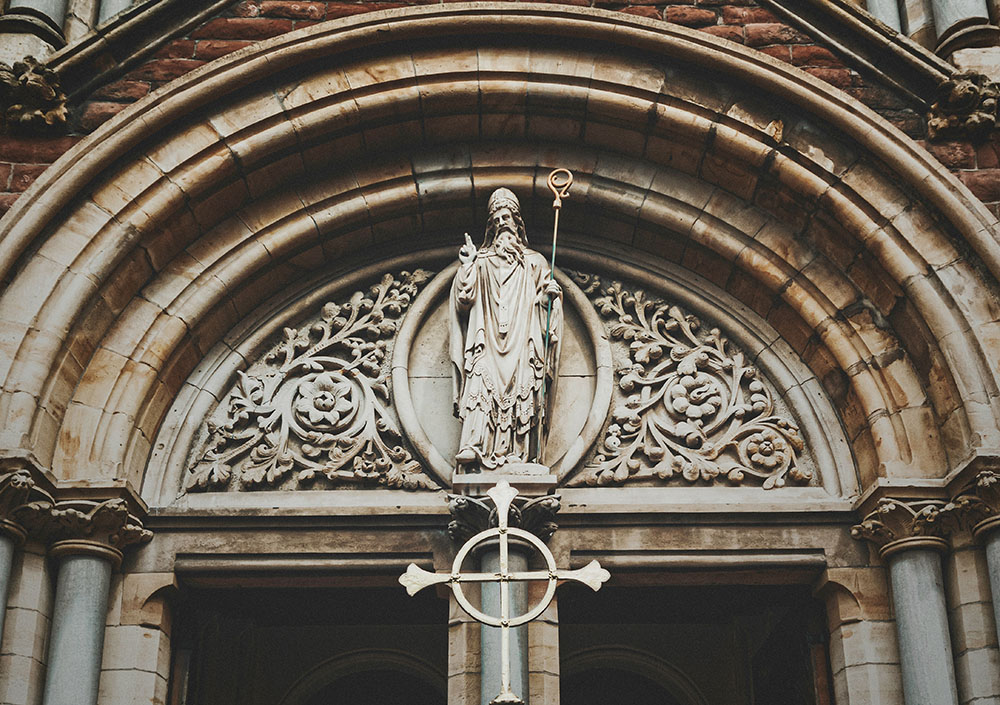
A statue of St. Patrick above the entrance to St. Patrick's Roman Catholic Church in Belfast's Cathedral Quarter in County Antrim, Northern Ireland (Unsplash/K. Mitch Hodge)
Patrick started as an aristocratic, self-indulgent adolescent — his very name, Patricius, means "noble lord" — the privileged heir of a waning empire, not only a stranger to the version of Christian faith he inherited but also to his very self.
Patrick's life changed when Irish raiders carried him away in bondage and sold him to a tribe who lived off the land. He then watched over animals on a remote hillside, enduring cold, hunger and loneliness. "I'll Fly Away" would seem a poignant expression of how Patrick may have felt: "enduring weary days" and longing to fly "like a bird from prison bars." If his story ended here, it could be his song.
Except that's only the beginning of Patrick's story of transformation. He awakened on and through the land, embracing his Christian faith and discovering full life. Patrick escaped after six years only to be told through a vision that he now belonged to the tribes. To return to himself he needed to return to Ireland.
Like Christ, he walked into the center of hostile powers, earning the wrath of a tribal chieftain and his warriors. On the run, Patrick sang "The Deer's Cry," declaring he would not fly away, but rather become part of this land. Patrick and his band blended into the hillside as deer to avoid capture, and as a result, spent decades ministering to the people of Ireland, returning to beauty.
There's a tendency to feel that Indigenous connection waters down Christian content, that including Indigenous content is inherently at the expense of Jesus. From this perspective, "The Deer's Cry" represents a mostly "pagan" worldview while "I'll Fly Away" is a manifestation of Christianity.
In fact, it's the opposite: "The Deer's Cry" culminates in Christ, while "I'll Fly Away" doesn't even mention him. And the Indigenous connection is what fully makes sense of the movement and power of "The Deer's Cry," and allowed Patrick to find life and re-discover his faith in whom Pope Benedict XVI once called "the One who is the Beauty itself."
Patrick is a saint for the journey of awakening from our aristocratic captivity, a saint for the journey back to ourselves and into Christ who surrounds us, who lives in the heart of the world.
Let's keep "I'll Fly Away" for our funerals and for when we are transitioning to the next life, and renew "The Deer's Cry" to follow Christ in this one.






